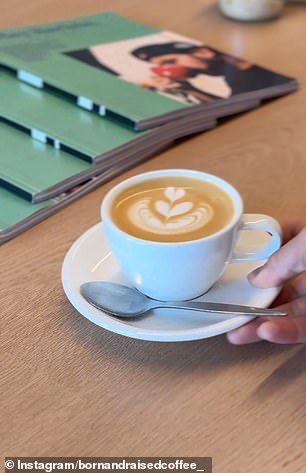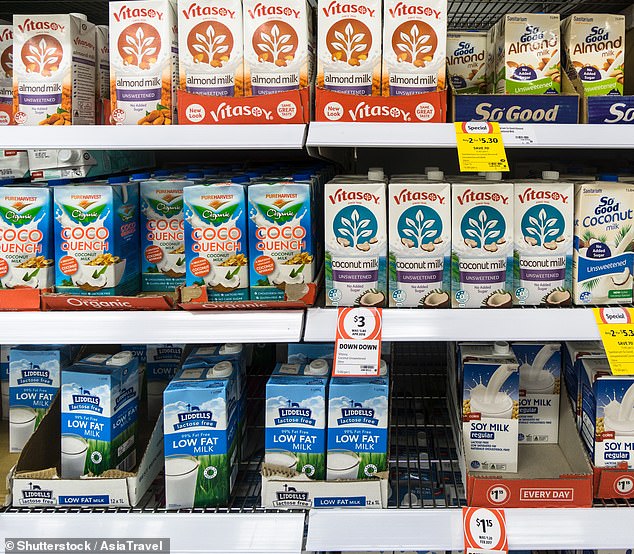A Melbourne coffee shop owner has shared the simple reason why customers are often charged a premium for coffees made with non-dairy milk, such as almond or soy.
Dan Dick, who runs four cafes in Melbourne, took to TikTok to explain that, in addition to the difference in cost of alternative milks (almost double the cost of cow’s milk), there is another hidden cost that many customers are not aware of.
“The workflow complication of having six different milks, especially with takeaway coffees which are the mainstay of my business, slows down service,” said the founder of Born and Raised Coffee.
He explained that instead of being able to steam a large jug of milk and serve a series of orders, the milk for each drink must be steamed separately.
“I was on shift this morning and I made about 12 drinks in a row that couldn’t be grouped together because they were all different milks. That makes everything very slow,” he said.
The experienced barista, who has worked in other hospitality venues before striking out on his own, said he was considering offering a surcharge-free milk alternative in the hope that non-dairy drinkers would predominantly choose that option.
‘If you were an almond milk drinker, would you drink soy or oat milk if there was no markup, or, taking it a step further, if my prices went up but black coffee stayed cheaper, would you, as a milk drinker, be inclined to switch to black coffee?’
‘This could help me control my final results and affect my workflow in a way that favors faster coffee preparation.’
Non-dairy milk alternatives come with a higher price tag when ordering coffee at a coffee shop. One business owner explains that not only are they more expensive, but they “disrupt workflow.”
Many coffee drinkers weighed in on the dairy dilemma.
“I like the idea of having an alternative to milk at the same price as regular milk,” said one.
“I think if there’s going to be a surcharge on some alternative milks, it might as well apply to all of them – often people choose a particular milk because they’re allergic to others and don’t switch to a cheaper one,” added another.
“The consumer must be cost conscious if they want to buy a premium product,” said a third.
“I usually drink oat milk. I would switch to soy milk if there was no upcharge, but not almond milk because almond milk is quite watery,” said a fourth.
One said that as an alternative milk drinker, he was “thinking about buying a proper coffee machine for the first time” as he couldn’t “justify paying $7 a day”.
Another commenter suggested that if they did this they could still buy their coffee beans from their local coffee shop and support small businesses.
Takeaway coffee seems to be one of the few luxuries Australians refuse to give up, even as financial pressures have increased in intensity in recent years.
Coffee sales have remained stable despite the economic crisis.
Although many of us were upset when prices started to rise last year, they have since largely stayed in the range between $4.00 and $5.50 for a basic drink.
But this could soon change. Compared to international standards, Australian coffee prices are low.


Dan Dick of Born and Raised Coffee in Melbourne said making coffee with different milks requires a barista to prepare a separate pot for each order rather than brewing them in batches.
A recent survey by the University of South Australia in Australian capital cities found that the average price of a small takeaway flat white at specialty venues is A$4.78.
But in some international capitals, it is almost twice as high, even after adjusting for local purchasing power parity.
In London, a small flat white costs around AU$6.96. In Singapore, AU$8.42. In Athens, up to AU$9.95.
The latest data from IBISWorld shows that while Australian cafes’ net profits have recovered from a 2020 drop, by 7.6 per cent, they are still much lower than Australia’s average corporate profit margin of 13.3 per cent.
Just looking at the cost of the raw materials for a takeaway coffee (the milk, the beans, a cup and a lid) might make the margin seem lucrative, but this doesn’t tell the whole picture.
According to Adelaide-based Pablo and Rusty Coffee Roasters, milk and coffee beans account for about 24 percent of the cost of a coffee.
The cup, lid and barista equipment maintenance account for about 10 percent.
Building rent, running costs and GST account for another 32 per cent and the remaining 34 per cent is staff salaries.

